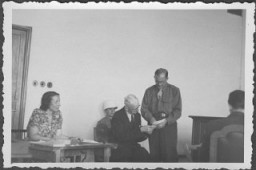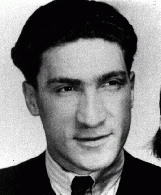You searched for: %E5%8D%A1%E5%A1%94%E5%B0%94%E4%B8%96%E7%95%8C%E6%9D%AF%E8%B5%9B%E7%A8%8B%E6%97%B6%E9%97%B4%E8%A1%A8%E3%80%90%E6%89%8B%E5%8A%A8%E8%BE%93%E5%85%A5%E2%88%B6___bet126.net___%E3%80%91%E4%BA%9A%E6%B4%B2%E6%9C%80%E5%A4%A7%E5%8D%9A%E5%BD%A9%E5%85%AC%E5%8F%B8%E5%AE%89%E5%85%A8%E7%A8%B3%E5%AE%9A%E6%9E%81%E9%80%9F%E5%87%BA%E6%AC%BE%E6%9C%89%E4%BF%9D%E9%9A%9C%EF%BC%81
<< Previous | Displaying results 81-90 of 168 for "%E5%8D%A1%E5%A1%94%E5%B0%94%E4%B8%96%E7%95%8C%E6%9D%AF%E8%B5%9B%E7%A8%8B%E6%97%B6%E9%97%B4%E8%A1%A8%E3%80%90%E6%89%8B%E5%8A%A8%E8%BE%93%E5%85%A5%E2%88%B6___bet126.net___%E3%80%91%E4%BA%9A%E6%B4%B2%E6%9C%80%E5%A4%A7%E5%8D%9A%E5%BD%A9%E5%85%AC%E5%8F%B8%E5%AE%89%E5%85%A8%E7%A8%B3%E5%AE%9A%E6%9E%81%E9%80%9F%E5%87%BA%E6%AC%BE%E6%9C%89%E4%BF%9D%E9%9A%9C%EF%BC%81" | Next >>
-
Reversal of Fortune: Robert Kempner
ArticleLawyer Robert Kempner was expelled from Germany in 1935. After WWII, he would return to serve as assistant US chief counsel during the IMT at Nuremberg.

-
Coenraad Rood
ID CardCoenraad was born to a Jewish family in Amsterdam that traced its roots in the Netherlands back to the 17th century. After graduating from public school, Coenraad went on to train as a pastry maker at a trade school. But after completing his training at the age of 13, he decided for health reasons to change professions, and he began to study tailoring. 1933-39: Coenraad finished apprenticing as a tailor in 1937 when he was 20. Then he spent a year working as a nurse in a Jewish home for the permanently…

-
Henny Fletcher Aronsen describes liberation from a death march from Stutthof
Oral HistoryHenny was born into an upper-middle-class Jewish family in Kovno, Lithuania. She and her brother attended private schools. In June 1940 the Soviets occupied Lithuania, but little seemed to change until the German invasion in June 1941. The Germans sealed off a ghetto in Kovno in August 1941. Henny and her family were forced to move into the ghetto. Henny married in the ghetto in November 1943; her dowry was a pound of sugar. She survived several roundups during which some of her friends and family were…

-
Wetzlar Displaced Persons Camp
ArticleAfter WWII, many Holocaust survivors, unable to return to their homes, lived in displaced persons camps in Germany, Austria, and Italy. Read about Wetzlar DP camp.

-
Stanisławów
ArticleLearn more about the history of Stanisławów during the Holocaust and World War II.
-
München-Schwabing
ArticleLearn about the establishment and history of the Dachau subcamp München-Schwabing, and the role of Eleonore Baur (also known as Schwester Pia or Sister Pia).
-
Hana Mueller Bruml describes her deportation to and arrival at Theresienstadt
Oral HistoryIn 1942, Hana was confined with other Jews to the Theresienstadt ghetto, where she worked as a nurse. There, amid epidemics and poverty, residents held operas, debates, and poetry readings. In 1944, she was deported to Auschwitz. After a month there, she was sent to Sackisch, a Gross-Rosen subcamp, where she made airplane parts at forced labor. She was liberated in May 1945.

-
Uckermark Youth Camp
ArticleThe Uckermark camp was one of the so-called youth protection camps that the Nazi regime established for young people who were alleged to have strayed from Nazi norms and ideals.
-
Berga-Elster ("Schwalbe V")
ArticleAt the Berga-Elster subcamp of Buchenwald, prisoners were forced to do dangerous and brutal work in tunnels to support fuel production for the German war effort.

-
Mannschafts-Stammlager (Stalag) IX B
ArticleIn 1939, the Nazis established the Mannschafts-Stammlager (Stalag) IX B camp in Germany. Learn more about the camp’s history, prisoners, and liberation.
